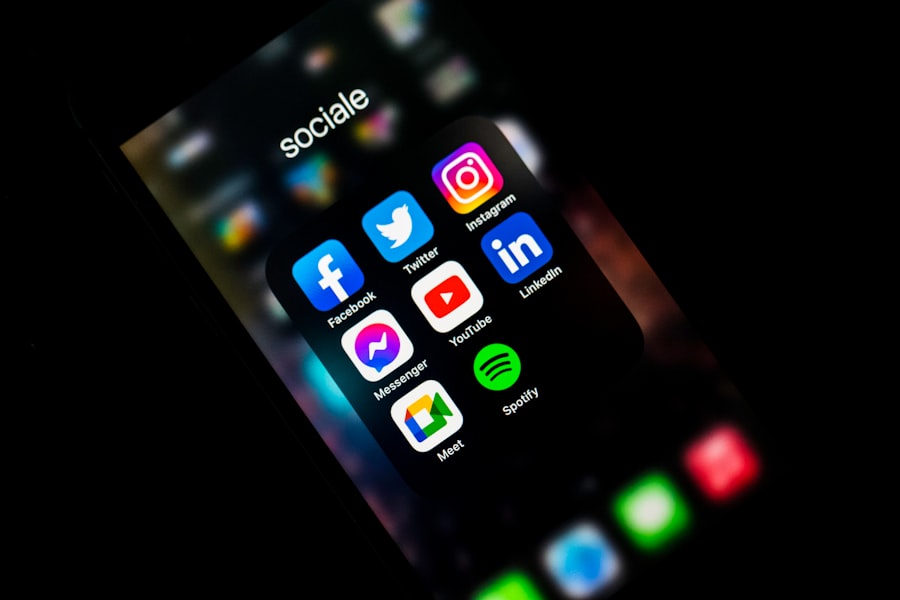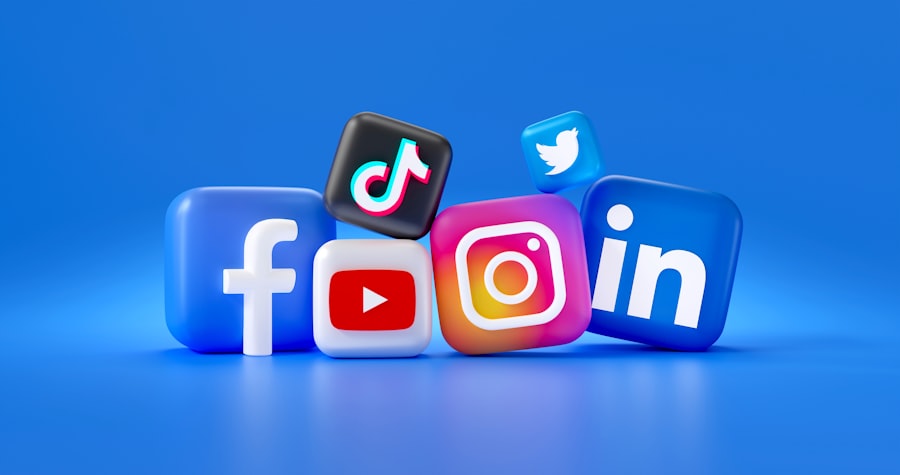In the contemporary sports landscape, athlete branding has emerged as a critical component of an athlete’s career trajectory. The concept of branding extends beyond mere recognition; it encapsulates the values, personality, and public perception of an athlete. A strong personal brand can significantly influence an athlete’s marketability, sponsorship opportunities, and overall legacy.
For instance, athletes like LeBron James and Serena Williams have cultivated brands that resonate with their audiences, allowing them to transcend their respective sports and become cultural icons. This phenomenon underscores the importance of strategic branding in establishing a lasting impact both on and off the field. Moreover, athlete branding is not solely about individual success; it also plays a pivotal role in shaping the narratives surrounding sports as a whole.
Athletes who effectively communicate their values and engage with their communities can inspire social change and foster a sense of belonging among fans. For example, Colin Kaepernick’s activism has not only defined his brand but has also sparked conversations about social justice within the sports community. This illustrates how an athlete’s brand can serve as a platform for advocacy, making it essential for athletes to understand the broader implications of their personal branding efforts.
Key Takeaways
- Athlete branding is crucial for building a personal identity and career opportunities beyond sports.
- Social media platforms are powerful tools for athletes to connect with fans and showcase their brand.
- Creating engaging and authentic content is key to attracting and retaining a loyal audience.
- Collaborations with brands and influencers can enhance visibility and credibility for athlete branding.
- Monitoring analytics and managing reputation are essential to optimize and maintain a positive social media presence.
Leveraging Social Media Platforms for Athlete Branding
Social media has revolutionized the way athletes connect with their fans and build their brands. Platforms such as Instagram, Twitter, and TikTok provide athletes with unprecedented access to their audience, allowing them to share their stories, experiences, and insights in real-time. The immediacy of social media enables athletes to cultivate a more authentic relationship with their followers, fostering loyalty and engagement.
For instance, athletes like Kevin Durant and Naomi Osaka have utilized Twitter to share their thoughts on various issues, creating a dialogue that resonates with their fan base and enhances their personal brand. Furthermore, social media serves as a powerful tool for athletes to showcase their personalities beyond their athletic prowess. By sharing behind-the-scenes glimpses of their lives, training routines, and personal interests, athletes can humanize themselves in the eyes of their fans.
This approach not only strengthens their connection with followers but also differentiates them from competitors. For example, gymnast Simone Biles frequently shares her experiences outside of gymnastics, including her advocacy for mental health awareness, which has endeared her to a broader audience and solidified her brand as one that champions resilience and authenticity.
Creating Engaging Content for Athlete Branding on Social Media

The creation of engaging content is paramount for athletes looking to enhance their branding on social media. Content that resonates with audiences often includes a mix of personal anecdotes, training highlights, and interactive elements such as Q&A sessions or live streams. By diversifying content types, athletes can cater to different segments of their audience while maintaining interest and engagement.
For instance, NFL quarterback Russell Wilson often shares motivational messages alongside clips of his training sessions, appealing to both sports enthusiasts and those seeking inspiration in their daily lives. In addition to traditional posts, leveraging multimedia formats such as videos and stories can significantly enhance an athlete’s brand presence. Short-form videos on platforms like TikTok or Instagram Reels allow athletes to showcase their skills in creative ways while tapping into trending challenges or themes.
This not only increases visibility but also encourages user-generated content as fans participate in challenges inspired by the athlete. A notable example is NBA star Luka Dončić, who has embraced TikTok to share his basketball skills and engage with fans through fun challenges, thereby expanding his reach beyond conventional sports audiences.
Building a Strong Personal Brand as an Athlete on Social Media
| Metric | Description | Recommended Target | Importance |
|---|---|---|---|
| Follower Growth Rate | Percentage increase in followers over a specific period | 5-10% monthly | High – Indicates expanding reach and influence |
| Engagement Rate | Average likes, comments, and shares per post relative to followers | 3-6% | High – Reflects audience interaction and content relevance |
| Content Posting Frequency | Number of posts shared per week | 3-5 posts/week | Medium – Consistency helps maintain audience interest |
| Brand Mentions | Number of times the athlete is mentioned/tagged by others | Increasing trend over time | Medium – Shows growing recognition and influence |
| Audience Demographics | Age, location, and interests of followers | Aligned with athlete’s target market | High – Ensures content resonates with the right audience |
| Collaboration Count | Number of partnerships with brands or other influencers | 2-4 collaborations per quarter | Medium – Enhances credibility and expands reach |
| Story Views | Average number of views on temporary content like stories | At least 20% of total followers | Medium – Indicates active audience engagement |
| Direct Messages Received | Number of personal messages from fans or brands | Increasing over time | Low – Shows personal connection and interest |
Building a strong personal brand requires consistency and authenticity in messaging across all social media platforms. Athletes must define their core values and ensure that their online presence reflects these principles. This involves curating content that aligns with their identity while also resonating with their target audience.
For example, tennis player Maria Sharapova has successfully built her brand around themes of empowerment and entrepreneurship, often sharing insights into her business ventures alongside her athletic achievements. Moreover, engaging with followers is crucial in solidifying an athlete’s personal brand. Responding to comments, participating in discussions, and acknowledging fan support can foster a sense of community and loyalty among followers.
Athletes like Chris Paul have mastered this approach by actively engaging with fans on Twitter, sharing personal stories that resonate with their audience while reinforcing their brand identity as approachable and relatable figures. This level of interaction not only enhances the athlete’s image but also encourages fans to become advocates for their brand.
Collaborating with Brands and Influencers for Athlete Branding
Collaborations with brands and influencers can significantly amplify an athlete’s branding efforts on social media. Strategic partnerships allow athletes to leverage the reach and credibility of established brands while enhancing their own visibility. For instance, basketball player Stephen Curry’s collaboration with Under Armour has not only elevated his brand but has also positioned him as a key player in the athletic apparel market.
Such partnerships can create mutually beneficial relationships where both the athlete and the brand gain exposure to new audiences. Influencer collaborations also present unique opportunities for athletes to connect with diverse demographics. By partnering with influencers who align with their values and target audience, athletes can tap into new markets and expand their reach.
For example, soccer star Megan Rapinoe has collaborated with various activists and brands focused on social justice issues, reinforcing her brand as one that champions equality and inclusivity. These collaborations not only enhance the athlete’s visibility but also contribute to a broader narrative that resonates with socially conscious consumers.
Utilizing Analytics and Data to Optimize Athlete Branding on Social Media

In the digital age, data analytics plays a crucial role in optimizing athlete branding strategies on social media. By analyzing engagement metrics such as likes, shares, comments, and follower growth, athletes can gain valuable insights into what content resonates most with their audience. This data-driven approach allows athletes to refine their content strategies, ensuring that they are delivering value to their followers while enhancing their brand presence.
For instance, tools like Google Analytics or social media insights can help athletes identify peak engagement times or popular content types among their followers. By leveraging this information, athletes can tailor their posting schedules and content formats to maximize reach and engagement. Additionally, monitoring audience demographics can provide insights into who is engaging with an athlete’s content, allowing for more targeted marketing efforts.
This strategic use of analytics not only enhances an athlete’s branding efforts but also fosters a deeper understanding of their audience’s preferences.
Managing and Maintaining a Positive Image on Social Media as an Athlete
Maintaining a positive image on social media is paramount for athletes looking to build a successful personal brand. Given the public nature of social media platforms, athletes must be mindful of their online behavior and the potential repercussions of their actions. This includes being cautious about the content they share, as well as how they engage with followers and other public figures.
For example, when faced with controversy or criticism, athletes like Tom Brady have demonstrated the importance of addressing issues head-on while maintaining professionalism in their responses. Additionally, proactive reputation management is essential for athletes navigating the complexities of social media. This involves regularly monitoring online conversations about themselves and addressing any misinformation or negative narratives that may arise.
Athletes can employ strategies such as hiring public relations professionals or utilizing social listening tools to stay informed about public sentiment surrounding their brand. By actively managing their online presence, athletes can mitigate potential damage to their reputation while reinforcing a positive image that aligns with their branding goals.
Navigating the Challenges and Pitfalls of Athlete Branding on Social Media
While social media offers numerous opportunities for athlete branding, it also presents challenges that must be navigated carefully. One significant pitfall is the potential for miscommunication or backlash stemming from poorly thought-out posts or comments. Athletes must be aware that every interaction on social media is subject to scrutiny; a single misstep can lead to widespread criticism or damage to their brand image.
For instance, when NBA player Kyrie Irving made controversial statements regarding vaccination policies, he faced significant backlash that affected both his public perception and endorsement opportunities. Moreover, the pressure to maintain a constant online presence can lead to burnout among athletes. The expectation to produce engaging content regularly may detract from an athlete’s focus on training and performance.
Striking a balance between personal branding efforts and athletic commitments is crucial for long-term success. Athletes should consider setting boundaries around their social media usage or collaborating with professionals who can assist in managing their online presence effectively. In conclusion, while athlete branding on social media presents unique opportunities for growth and engagement, it requires careful consideration of various factors ranging from content creation to reputation management.
By understanding the intricacies of personal branding in the digital age, athletes can navigate this landscape effectively while building a legacy that extends beyond their athletic achievements.



